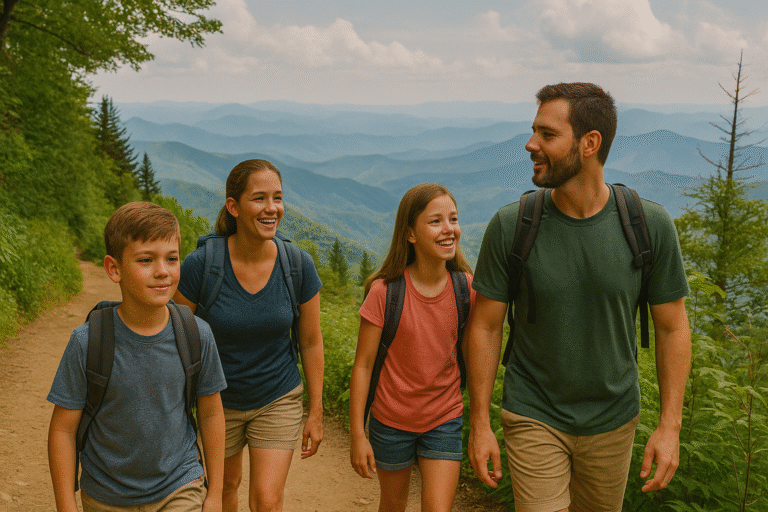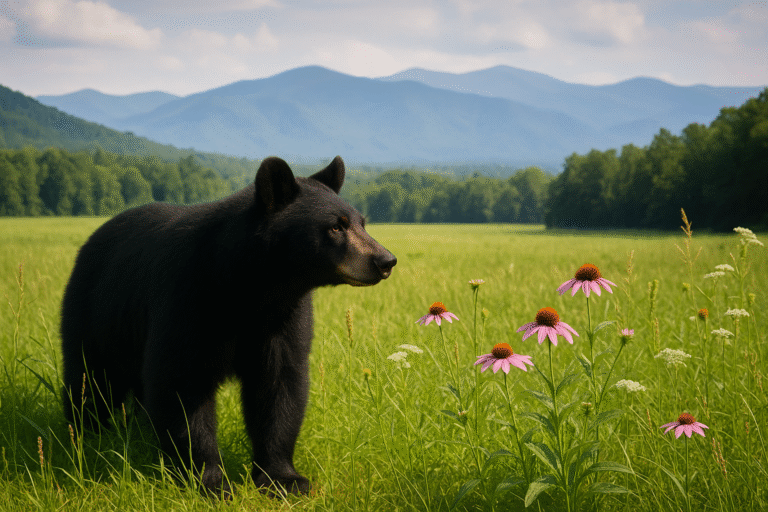
Heading out for a day hike in the Great Smoky Mountains? Whether you’re exploring a peaceful valley trail or summiting a misty ridge, having the right gear makes all the difference. Being well-prepared means a safer, more enjoyable experience—and it helps you fully soak in the stunning beauty of the park.
This ultimate day hike checklist is tailored specifically for the terrain, climate, and conditions of the Smokies. Let’s dive into the essentials you should pack for your mountain adventure.
Essentials for Every Day Hike
These items should always be in your pack, no matter the trail’s length or difficulty:
1. Daypack or Backpack
Choose a comfortable, well-fitting daypack with padded straps. A 15–25L pack is usually ideal for day hikes. Look for one with water bottle pockets and internal organization.
2. Water (and Plenty of It)
Hydration is crucial. Bring at least 1 liter per person for short hikes and up to 3 liters for longer or strenuous hikes.
Pro Tip: Use a hydration bladder or carry a lightweight water bottle. Water purification tablets or a mini filter can be handy if you’re hiking near streams.
3. Trail Snacks
Keep your energy up with protein-rich snacks:
- Trail mix or mixed nuts
- Granola or energy bars
- Dried fruit
- Jerky
Avoid heavy meals. Snack often to stay energized.
4. Navigation Tools
Even on well-marked trails, it’s smart to have a way to navigate:
- Park map or trail guide (from a visitor center)
- Downloaded offline maps on your phone
- GPS device or compass (optional but helpful)
Cell service is spotty—never rely solely on Google Maps.
5. Weather-Appropriate Clothing
Conditions in the Smokies can change rapidly. Dress in moisture-wicking layers, including:
- Lightweight shirt
- Fleece or insulating mid-layer
- Waterproof or windproof jacket (rain is common)
- Hat and gloves in cooler months
Avoid cotton, which traps moisture. Always bring an extra layer just in case.
6. Footwear
Wear broken-in hiking boots or trail shoes with good grip and ankle support. Avoid flip-flops or unsupportive sneakers.
Also pack:
- Extra socks (preferably wool or synthetic)
- Gaiters (for muddy or wet conditions)
7. First Aid Kit
A basic kit should include:
- Bandages
- Antiseptic wipes
- Blister pads
- Tweezers
- Pain relievers
- Allergy medication (e.g., Benadryl)
Add insect bite treatment and sunscreen.
8. Sun Protection
Even on cloudy days, UV rays can damage skin at higher elevations:
- Broad-spectrum sunscreen (SPF 30+)
- Sunglasses
- Lip balm with SPF
- Hat or cap
9. Emergency Essentials
Be ready for the unexpected:
- Emergency whistle
- Headlamp or flashlight (with extra batteries)
- Lightweight emergency blanket or bivy
- Pocket knife or multitool
- Firestarter or waterproof matches
10. Trash Bag or Ziplock
Follow Leave No Trace principles. Pack out everything—including food wrappers, used tissues, and fruit peels.
Optional But Recommended Items
Trekking Poles
Great for knees and balance, especially on steep or rocky trails. Adjustable poles are best.
Bug Spray
Spring and summer bring out mosquitoes and ticks. A DEET-free repellent or natural alternative is ideal.
Camera or Binoculars
Capture wildlife, waterfalls, and mountain views. Binoculars are great for birdwatching and scenic overlooks.
Lightweight Sit Pad or Blanket
Perfect for picnics, water breaks, or soaking in the views.
Snacks for Kids (if hiking with little ones)
Think goldfish crackers, applesauce pouches, and fruit snacks. Keep them easy and mess-free.
Bear Spray (for backcountry hikes)
While bear encounters are rare, bear spray is a good precaution on remote trails.
Seasonal Add-Ons
Spring
- Wildflower guide
- Waterproof boots
- Extra socks
Summer
- Electrolyte packets
- Cooling towel
- Bug net hat
Fall
- Gloves and beanie
- Layered clothing
- Thermos with warm drink
Winter
- Microspikes or crampons (for icy conditions)
- Thermal base layers
- Hand warmers
Pre-Hike Checklist
- Check the weather forecast
- Tell someone your hiking plans and estimated return time
- Download offline maps or carry a printed trail guide
- Visit a visitor center for trail updates or alerts
- Check your parking tag (required for many trailheads)
- Use the restroom before starting your hike
What Not to Pack
- Heavy gear for short hikes (unless training)
- Glass containers (breakable and heavy)
- Loud music or speakers (enjoy the natural sounds)
- Scented lotions or perfumes (they attract bugs and animals)
Final Thoughts
The Smokies are beautiful, wild, and full of surprises—which is exactly why being prepared matters. Packing smart means you can relax, hike confidently, and be ready for whatever the trail brings.
Whether you’re out for a gentle stroll to Laurel Falls or tackling a summit like Mt. LeConte, this checklist will help you make the most of your time on the trail.
Happy hiking, and don’t forget: the best views often come after the hardest climbs.





